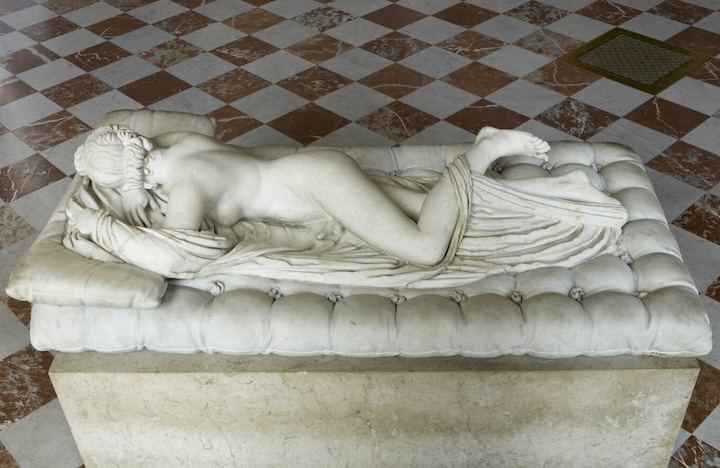The most important issue about the Dicastery for the Doctrine of the Faith’s recent response regarding “transgender” baptism is the use of the word “transgender.” A quick “so-called” is not enough of a qualifier. No real answer to the various problems it involves can be given before we have a free and frank conversation about what this word signifies and why it is used as an identity.
Accepting the word “transgender” and using it in an official document represents a capitulation to an ideology that is completely contrary to, and the enemy of, the Catholic faith and indeed reality itself. This is not the first time, either. For years now, bishops have used this word in, for instance, statements on bills before legislatures on bathrooms and pronouns. They lose the argument before it begins, for defining terms is everything in seeking the truth and helping others find it.
The late Fr. Paul Mankowski, in his First Things review of Fr. James Martin SJ’s book, Building a Bridge, pinpointed the word “gay” as, above all, political:
One does not find among lesbian, gay, bisexual, and transgender people – taken as a collectivity – distinctive commonalities of religion, nativity, culture, recreation, or fellowship. Their shared interests are political; they are aggregated not as a true community but as something like a caucus.
The forces of gender ideology well know how to shape public perception. They offer pictures of clean-cut men holding hands to embed the idea of anodyne “gayness”; they censor anyone using the word sodomy. They sanitize “queerness” as a wacky, boa-wrapped library outing. When it comes to “transgender,” they hold speech hostage by insisting that any dissenter from the current craze simply wants young people dead.
This slick campaign works: its perpetrators are emboldened by its triumph. Having won the so-called same-sex marriage question, they quickly pivoted to an even more primal one: the nature of man himself.
But it’s the job of the Catholic Church to hold fast to eternal things and not to abandon the faithful as pawns in a political game. Questions do not have to be answered using the vocabulary tendered. We ought to challenge how they – and who are they? – characterize themselves and others (who gave them sovereignty over their victims?).
The rise of transgender ideology has many facets, hard to marshal into one place but known by those with common sense who pay attention. Anyone not born yesterday can remember a time when it didn’t exist.
Sure, there have always been a few men in drag here and there, and the odd Parisian female in a man’s suit and tie. People once accepted such things as part of the weird parade of life. They also kept their children away from them.
But now, in the very young, we observe vulnerability where there is divorce and father-absence, and a form of child abuse where the parent, usually the mother, imposes a pathology on the child.
In older children, social media has created a virus that infects the weak immune system of young people formed by a culture opposed to their normal development. And this is now bolstered by a school system submissive to LGBTQA interests. Everyone with a child in public school knows the ubiquity of signs, books, programs, and events designed to pick off the vulnerable and indoctrinate all.

The medical establishment geared up during lockdown to monetize the trend. “Gender affirming care” – that Orwellian and remarkably effective phrase – assures a strong bottom line for surgical wards and pharmaceutical companies, and not only for the horrible procedures, but for the creation of a life-long patient.
Several states have adopted regulations that detach children from parental authority so that procedures can move ahead over their objections. The child just needs to indicate he may think he’s of the opposite “gender,” and the machinery goes into operation. Planned Parenthood has changed its business model, post-Dobbs, to peddling puberty blockers to adolescents, whom it accesses through public schools, and refers to medical centers.
Make no mistake, there are overtly diabolical aspects to the movement, forces requiring human sacrifice, just as with abortion. Even those who can somewhat shelter from it feel their ontological moorings loosened.
These are the facts: taking vulnerable people, most of them very young, mutilating them, and consigning them to a life of pain and high risk of suicide. Beyond the physical atrocities is an attack on the meaning of life itself – of how God made us and what His plan of happiness is.
Back to common sense: Let’s suppose a person suffers from another sort of mental illness, that of another sort of bodily dysphoria that causes him to seek the amputation of a limb; that person is not a “trans-limber.”
If he presents as a “trans-limber” for baptism, the priest is rightly suspicious. It means the person is confused on a fundamental level about what it means to be a person. The priest ought to worry if the person is being used by some larger entity, a political and pharmaceutical/medical interest behind a “trans-limber” movement. And he should expect the Church to back him up.
Such entities exist for “transgender.” A powerful one is the “A” in LGBTQA. Fr. Mankowski again:
It is noteworthy that Fr. Martin voices his wish that his readers understand the LGBT acronym expansively as LGBTQA – that is, to include “questioning or queer, and allies.” The word “ally,” designating not sexual appetite but political allegiance, gives the game away. [emphasis added]
Previous popes have explicitly warned against following publications that distort the truth. Our current pontiff and his theologians seem to get their information exclusively from them. They take propaganda on its own terms and manufacture a complex theological structure around it that, in turn, engenders even more complex rebuttals.
Yes, the sacrament of baptism is offered to sinners. But if groups weaponize a sacrament for their own purposes, the Church has a right to protect her treasure.
Sacraments ought to be given and taken in good faith. By accepting, even tacitly, the loaded word transgender as an identity, the Church opens the door to infiltration on many levels.
There are givens so fundamental that any denial of them undermines our very sanity. The creation of each person, male or female, is one of those bedrock givens. Emboldened, gender ideologues are now going for the sacraments. It’s not that a person with a mental illness can’t be baptized. The problem is precisely baptizing a person who publicly (using a certain word, wearing a certain sash, and so on) indicates his allegiance to a political movement inimical to the Catholic faith.
The Church can take the question of baptizing “transgenders” as an opportunity to confront the whole threat of the LGBTQA juggernaut. It’s a cataclysmic threat involving, well, everything. Are we to be complicit with lies that go to the very fundamental meaning of life? The proponents of gender ideology have power. Should that make us afraid to resist?
Start by asking what they mean by that word, “transgender.”

















